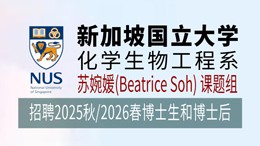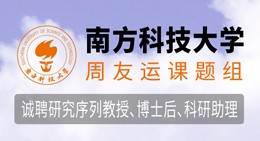当前位置:
X-MOL 学术
›
Zhongguo Dang Dai Er Ke Za Zhi
›
论文详情
Our official English website, www.x-mol.net, welcomes your feedback! (Note: you will need to create a separate account there.)
[Analysis and follow-up study on 8 children with combined congenital heart disease treated with simultaneous trans-catheter therapy].
Zhongguo dang dai er ke za zhi = Chinese journal of contemporary pediatrics Pub Date : 2008-10-25 Sheng-Quan Cheng 1 , Jian-Ping Liu , Xin Sun , Jun Li , Jun Zhang , Li-Wen Liu , Yue-Lin Deng , Yong-Chun Niu
Zhongguo dang dai er ke za zhi = Chinese journal of contemporary pediatrics Pub Date : 2008-10-25 Sheng-Quan Cheng 1 , Jian-Ping Liu , Xin Sun , Jun Li , Jun Zhang , Li-Wen Liu , Yue-Lin Deng , Yong-Chun Niu
Affiliation
OBJECTIVE
Interventional treatment for childhood combined congenital heart disease (CHD) has developed very quickly and more new types of occluders have emerged in recent years. The aim of this study is to investigate the efficiency and safety of interventional treatment for combined CHD in children.
METHODS
Eight children with combined CHD (4 boys and 4 girls), aged 6.1+/-2.9 years, underwent simultaneous transcatheter therapy. Of the 8 children with CHD, 1 case had atrial septal defect (ASD), ventricular septal defect (VSD) and patent ductus arteriosus (PDA), 1 case had ASD, PDA and pulmonary stenosis (PS), 1 case had ASD and PDA, 1 case had patent foramen ovale (PFO) and PS, and 4 cases had ASD and PS. The methods of transcatheter intervention for these patients were as follows: in patients with ASD,VSD and PDA, the occlusion of VSD was performed first, followed by PDA and ASD occlusions; in patients with ASD, PDA and PS, the occlusion of percutaneous balloon pulmonary valvuloplasty (PBPV) was performed first, followed by PDA and ASD occlusions; in patients with PFO and PS, the occlusion of PBPV was performed first, and PFO occlusion followed; in patients with ASD and PS, the occlusion of PBPV was performed first, and ASD occlusion followed.
RESULTS
The intervention operation was successfully performed in all of the 8 patients. No serious adverse events occurred during the operation. No residual shunt was found and all the occlusion devices were in the suitable sites shown by transthoracic echocardiography (TTE) and X-ray right after the operation. In the 6 patients with PS, the systolic pressure across the pulmonary valve decreased from 75.3+/-15.6 mmHg (before operation) to 14.0+/-5.6 mmHg after operation (P<0.05).A 3.4+/-1.2 years follow-up demonstrated that no residual shunt occurred and gradients across valve or coarctation sites were within the limit of satisfactory results. No complications were observed during the follow-up.
CONCLUSIONS
Transcatheter interventional therapy for childhood combined CHD can obtain satisfactory results by proper procedures.
中文翻译:

同步经导管治疗8例先天性心脏病合并小儿的分析与随访
目的对儿童合并先天性心脏病(CHD)的介入治疗发展很快,近年来,出现了更多新型的封堵器。这项研究的目的是调查儿童联合CHD介入治疗的效率和安全性。方法8例儿童合并冠心病(4名男孩和4名女孩),年龄6.1 +/- 2.9岁,同时接受经导管治疗。在8例CHD患儿中,有1例患有房间隔缺损(ASD),室间隔缺损(VSD)和动脉导管未闭(PDA),其中1例患有ASD,PDA和肺动脉狭窄(PS),其中1例患有ASD和PDA ,其中1例具有卵圆孔未闭(PFO)和PS,4例具有ASD和PS。这些患者的经导管干预方法如下:在ASD,VSD和PDA患者中,首先进行VSD闭塞,然后进行PDA和ASD闭塞。对于ASD,PDA和PS患者,首先进行经皮球囊肺动脉瓣成形术(PBPV)的闭塞,然后进行PDA和ASD闭塞。PFO和PS患者首先进行PBPV闭塞,然后进行PFO闭塞。在ASD和PS患者中,首先进行PBPV的闭塞,然后进行ASD闭塞。结果8例患者均成功完成了介入治疗。术中未发生严重不良事件。术后未发现残余分流,所有闭塞装置均位于经胸超声心动图(TTE)和X线检查显示的合适部位。在6例PS患者中,跨肺动脉瓣的收缩压从75.3 +/- 15降低。术前6 mmHg至术后14.0 +/- 5.6 mmHg(P <0.05)。3.4±1.2年的随访表明,未发生残余分流,瓣膜或缩窄部位的梯度均在满意范围内结果。随访期间未观察到并发症。结论经适当的程序,经导管介入治疗儿童合并冠心病可取得满意的效果。
更新日期:2019-11-01
中文翻译:

同步经导管治疗8例先天性心脏病合并小儿的分析与随访
目的对儿童合并先天性心脏病(CHD)的介入治疗发展很快,近年来,出现了更多新型的封堵器。这项研究的目的是调查儿童联合CHD介入治疗的效率和安全性。方法8例儿童合并冠心病(4名男孩和4名女孩),年龄6.1 +/- 2.9岁,同时接受经导管治疗。在8例CHD患儿中,有1例患有房间隔缺损(ASD),室间隔缺损(VSD)和动脉导管未闭(PDA),其中1例患有ASD,PDA和肺动脉狭窄(PS),其中1例患有ASD和PDA ,其中1例具有卵圆孔未闭(PFO)和PS,4例具有ASD和PS。这些患者的经导管干预方法如下:在ASD,VSD和PDA患者中,首先进行VSD闭塞,然后进行PDA和ASD闭塞。对于ASD,PDA和PS患者,首先进行经皮球囊肺动脉瓣成形术(PBPV)的闭塞,然后进行PDA和ASD闭塞。PFO和PS患者首先进行PBPV闭塞,然后进行PFO闭塞。在ASD和PS患者中,首先进行PBPV的闭塞,然后进行ASD闭塞。结果8例患者均成功完成了介入治疗。术中未发生严重不良事件。术后未发现残余分流,所有闭塞装置均位于经胸超声心动图(TTE)和X线检查显示的合适部位。在6例PS患者中,跨肺动脉瓣的收缩压从75.3 +/- 15降低。术前6 mmHg至术后14.0 +/- 5.6 mmHg(P <0.05)。3.4±1.2年的随访表明,未发生残余分流,瓣膜或缩窄部位的梯度均在满意范围内结果。随访期间未观察到并发症。结论经适当的程序,经导管介入治疗儿童合并冠心病可取得满意的效果。















































 京公网安备 11010802027423号
京公网安备 11010802027423号